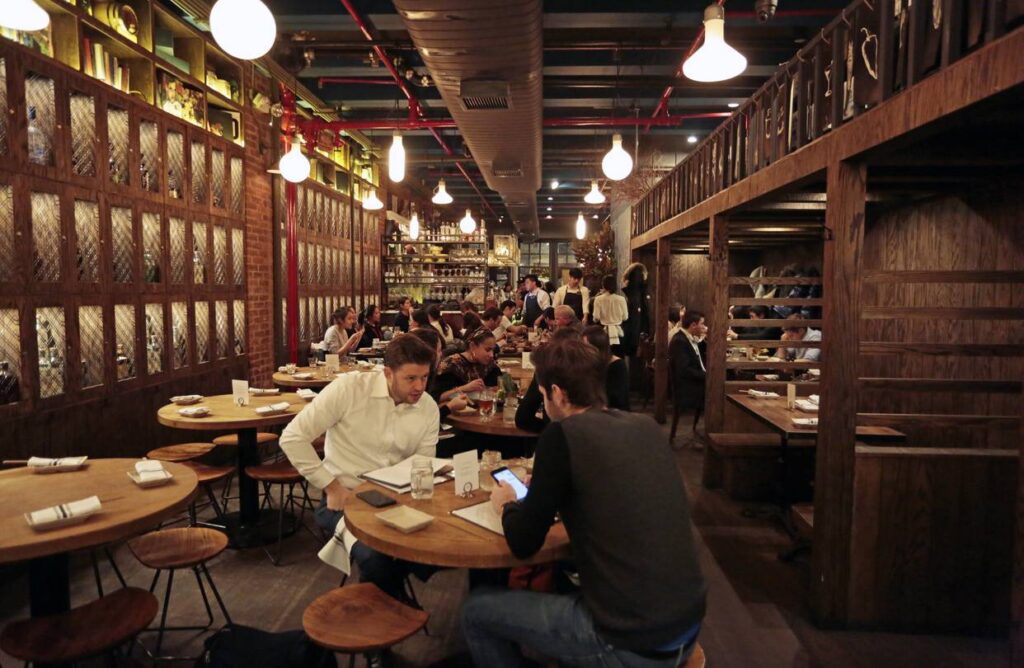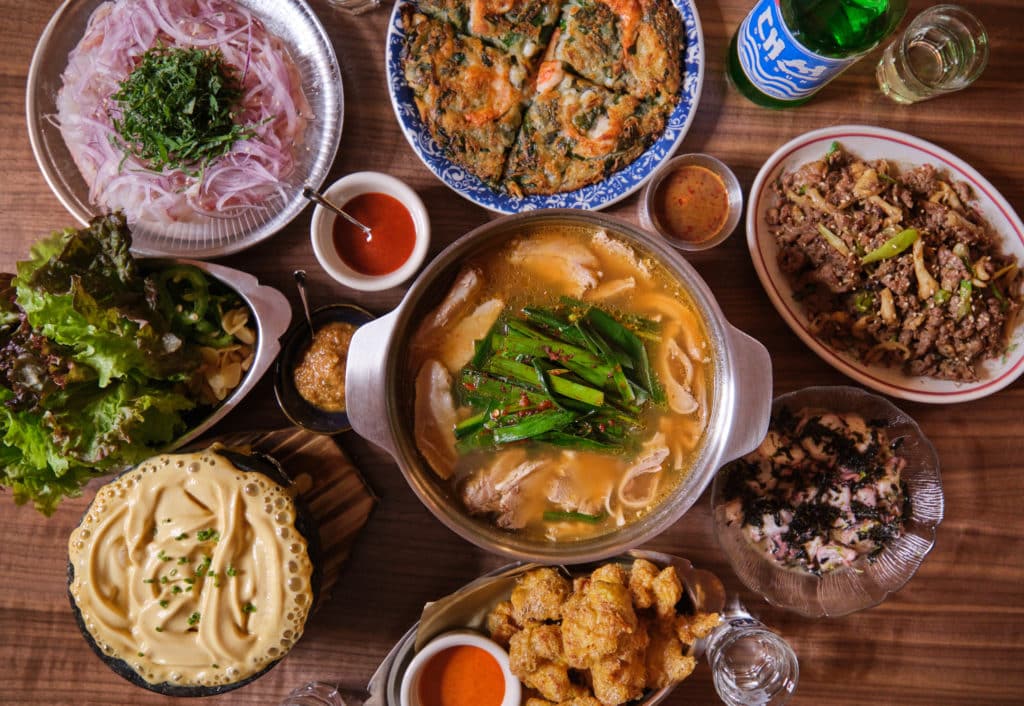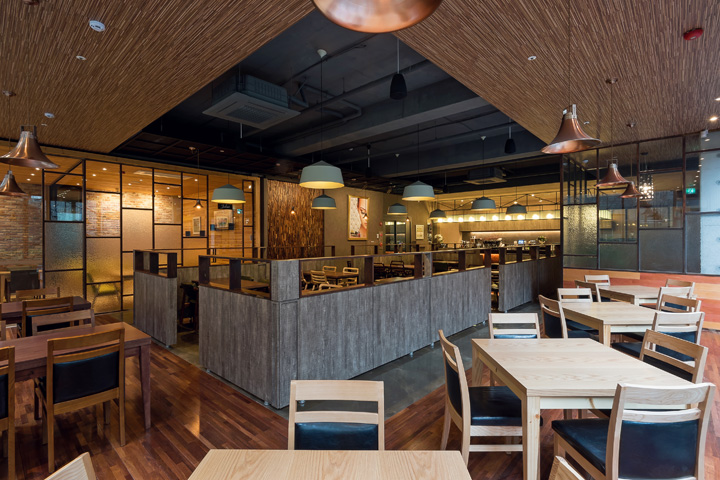Culinary Marvels: Exploring South Korea’s Trendsetting Restaurants
South Korea, a gastronomic haven nestled in the heart of Asia, boasts a vibrant culinary scene that captivates the taste buds of locals and visitors alike. From traditional delicacies to avant-garde fusion, the country’s restaurants are a testament to its rich culinary heritage and innovative spirit. Let’s embark on a flavorful journey through South Korea’s trendsetting restaurants, where each bite tells a story of tradition and modernity. If you want to drive to South Korea you can rent a vehicle from rent a car Beograd.
A Symphony of Tradition and Innovation

In the bustling streets of Seoul, where the old meets the new, a symphony of tradition and innovation unfolds within the walls of renowned restaurants. Here, culinary maestros blend centuries-old recipes with cutting-edge techniques, creating dishes that transcend time. The juxtaposition of flavors and textures in classics like Bibimbap, reinvented with a modern twist, showcases South Korea’s commitment to preserving its culinary roots while embracing the dynamism of the present.
Indulge in the sensory marvel of Hanjeongsik, a traditional Korean feast presented in a contemporary context. These elaborate meals, comprised of a myriad of banchan (side dishes), offer a kaleidoscope of tastes, colors, and aromas. Each dish tells a story of the region it hails from, celebrating the diversity of South Korea’s culinary landscape. As you savor the delicate balance of sweet, savory, and spicy, you’ll understand why South Korean chefs are celebrated for their ability to harmonize tradition and innovation on a single plate.
Seoul’s Hidden Gems
Beyond the well-trodden paths lie Seoul’s hidden gems, unassuming eateries that hold the key to authentic South Korean flavors. Tucked away in narrow alleys, these establishments are a testament to the nation’s culinary diversity. Explore the charming district of Insadong, where quaint tea houses and family-owned restaurants serve up specialties like Jeon, and savory Korean pancakes. These unpretentious delicacies, often infused with ingredients like kimchi or seafood, provide a delectable snapshot of South Korea’s regional cuisines.
If you want to drive around Seoul to find the best restaurant you can rent a Denver limousine to do that.
Venture into the vibrant neighborhood of Hongdae, where youth culture and gastronomy collide. Here, you’ll encounter a medley of street food vendors offering everything from Tteokbokki (spicy rice cakes) to Odeng (fish cake skewers). The bustling atmosphere and tantalizing aromas create an immersive culinary experience, reflecting South Korea’s penchant for casual, yet incredibly flavorful, dining.
If you want to sell your business so you can invest in a restaurant in Seoul you should contact M&A business advisors.
Haute Cuisine Redefined
In the realm of haute cuisine, South Korea stands tall, challenging the preconceived notions of fine dining. Enter the realm of restaurants that redefine gastronomic experiences through artistic presentations and meticulous attention to detail. At the forefront of this movement is the innovative use of local and seasonal ingredients, elevating the dining experience to new heights.
Every restaurant needs a proper HVAC system. If you need to fix your HVAC you should contact a company that works on HVAC in Matthews NC.
Savor the elegance of Hanwoo beef, South Korea’s prized native cattle breed, at upscale establishments that transform this culinary treasure into exquisite masterpieces. The marriage of traditional Korean flavors with contemporary culinary techniques results in dishes that are not only visually stunning but also a symphony of taste and texture. Culinary artisans, inspired by the country’s natural abundance, craft menus that evolve with the seasons, ensuring a dynamic and ever-changing tapestry of flavors. For a touch of stylish comfort, you can explore local markets offering unique designs of ladies t-shirts, blending modern fashion with the rich cultural experiences Korea has to offer.
Coastal Wonders: Jeju Island’s Culinary Tapestry
Journeying to Jeju Island unveils a culinary tapestry deeply rooted in the island’s unique geography and maritime heritage. Renowned for its pristine landscapes and traditional architecture, Jeju’s restaurants offer a seafood extravaganza that showcases the bounty of the surrounding seas. From Haemul Jeongol (seafood hot pot) to the iconic Hoe, raw fish served with an array of flavorful accompaniments, Jeju’s coastal wonders tantalize the senses. You can also go fishing if you like but be sure to check a bass fishing forecast to make sure that the weather is fine.
As you explore the island’s culinary offerings, don’t miss out on the simple yet sublime pleasures of black pork. Raised on the island, Jeju’s black pigs contribute to dishes like Samgyeopsal, grilled pork belly enjoyed with a variety of dipping sauces. The fusion of Jeju’s agricultural richness and maritime abundance creates a dining experience that pays homage to the island’s cultural and culinary heritage. While savoring these delights, plan your next culinary adventure by considering a visit to a relaxing spa in Toronto to enhance your overall well-being.
Exploring Culinary Fusion: Where Tradition Meets Global Influences
Beyond the borders of South Korea, its culinary scene is not immune to the influences of global gastronomy. A new wave of chefs and restaurateurs is embracing the art of fusion, blending traditional Korean flavors with international techniques and ingredients. Seoul, a melting pot of cultures, serves as the epicenter of this culinary movement.
In the trendy district of Itaewon, known for its diverse expatriate community, you’ll find restaurants marrying Korean staples with global twists. Picture Kimchi Tacos, a fusion of the iconic Korean fermented cabbage dish with the Mexican street food favorite. The result is a harmonious blend of spice and zest, a testament to the creative ingenuity that defines Seoul’s culinary landscape. These cross-cultural creations not only showcase the adaptability of Korean cuisine but also celebrate the city’s cosmopolitan spirit.
If you are looking to move to South Korea and you need to buy a house you should contact one of the mortgage companies in Raleigh NC.
Artistry on a Plate: Culinary Aesthetics in Modern Dining

As South Korea’s culinary scene evolves, so does the emphasis on the visual aesthetics of a dish. Modern dining experiences transcend taste alone, incorporating elements of artistry and design. Enter restaurants where each plate is a canvas and every ingredient is meticulously placed to create a visually stunning masterpiece.
In the heart of Gangnam, the upscale district synonymous with luxury and sophistication, culinary artisans take plating to new heights. Witness the creation of Bibimbap transformed into a work of art, where vibrant vegetables are arranged with precision, and the gochujang-infused sauce swirls elegantly on the plate. The marriage of flavor and aesthetics elevates the dining experience, offering a feast for both the eyes and the palate.
Revival of Heritage: Ancient Recipes Rediscovered
Amidst modernity, a growing movement is breathing new life into ancient recipes that have been passed down through generations. South Korea’s culinary landscape is witnessing a revival of heritage, with chefs delving into the annals of history to rediscover forgotten flavors and cooking techniques.
In the historic city of Gyeongju, often referred to as “the museum without walls,” restaurants are embracing the culinary traditions of the Silla Dynasty. Dishes like Hwangnam-ppang, a sweet red bean-filled pastry, and Gyeongju bread, a unique twist on the French baguette, reflect the rich culinary heritage of this ancient city. By reintroducing these age-old recipes, chefs are not only preserving South Korea’s culinary legacy but also offering a taste of history to the modern palate.
The Rise of Vegan and Plant-Based Cuisine
As the world embraces a more conscious approach to dining, South Korea is not far behind in the global shift toward vegan and plant-based cuisine. In the heart of Seoul, innovative chefs are reimagining traditional Korean dishes, replacing meat with plant-based alternatives without compromising on flavor.
Explore restaurants where dishes like Japchae, typically made with stir-fried beef, are transformed into a vibrant and satisfying plant-based delight. The use of tofu, mushrooms, and an array of vegetables creates a medley of textures and flavors that cater to the growing demand for sustainable and cruelty-free dining options. South Korea’s culinary landscape is evolving to embrace diverse dietary preferences, ensuring that everyone can partake in the country’s gastronomic delights.
If you want to create a website where you can share your vegan recipes you should check web hosting service reviews to find the best hosting provider.
Culinary Education: From Farm to Table
The relationship between diners and the source of their food has become a focal point in South Korea’s culinary evolution. A burgeoning interest in farm-to-table dining experiences has led to a closer connection between producers and consumers. Restaurants, especially those in rural areas, are taking the concept of culinary education to new heights.
In the picturesque countryside of Boseong, known for its sprawling green tea fields, restaurants are offering immersive experiences that take diners on a journey from the farm to the table. Visitors can participate in tea harvesting and then enjoy dishes infused with freshly plucked leaves. This hands-on approach not only fosters a deeper appreciation for the culinary process but also strengthens the bond between diners and the agricultural roots of South Korea. These restaurants always have an event host present.
Gastronomic Tourism: A Culinary Expedition Across Regions
The allure of South Korea’s diverse culinary landscape has given rise to a burgeoning trend—gastronomic tourism. Travelers are embarking on culinary expeditions across the country, exploring the unique flavors and specialties that each region has to offer.
In the coastal city of Busan, renowned for its seafood markets and pristine beaches, gastronomic enthusiasts can indulge in Hoe, a raw fish delicacy that captures the essence of maritime abundance. Meanwhile, in the mountainous region of Pyeongchang, famous for its winter sports, restaurants showcase hearty dishes like Dakgalbi, a spicy stir-fried chicken that warms both body and soul. Gastronomic tourism not only promotes regional cuisines but also fosters cultural exchange as travelers savor the diverse culinary traditions that define South Korea.
Digital Dining: The Fusion of Technology and Gastronomy

In the era of digital innovation, South Korea’s culinary scene is embracing technology to enhance the dining experience. From interactive menus to virtual cooking classes, restaurants are incorporating digital elements that add a new dimension to gastronomy.
In the tech-savvy district of Silicon Valley in Seoul, you’ll find restaurants equipped with smart tables that allow diners to customize their dining ambiance. Digital projections transform the dining environment, immersing patrons in virtual landscapes that complement the flavors of their dishes. Additionally, virtual reality cooking classes offer a unique opportunity for aspiring chefs to learn traditional Korean recipes from the comfort of their homes, bridging the gap between culinary tradition and contemporary technology. If you are looking to open a restaurant in this district you will have to consult with a business litigation expert witness for potential legal issues.
Besides amazing restaurants, South Korea is famous for having the best fashion business course.
Conclusion
As we conclude our exploration of South Korea’s trendsetting restaurants, it becomes evident that the country’s culinary landscape is a dynamic tapestry woven with threads of tradition, innovation, and global influences. From the bustling streets of Seoul to the tranquil landscapes of Jeju Island, each region contributes unique flavors and stories to the gastronomic narrative.
South Korea’s culinary journey extends beyond the plate, encompassing a myriad of experiences that cater to diverse palates and preferences. Whether indulging in the visual artistry of modern dining or rediscovering ancient recipes in historic cities, each culinary encounter is a gateway to understanding the rich tapestry of South Korean culture.
If you are looking to sell your house and move to South Korea you can use the sell my house in Allentown PA service.
In a world where gastronomy is both an art and a science, South Korea stands as a testament to the enduring spirit of culinary creativity. As chefs continue to push boundaries, embracing sustainability, technology, and global influences, the future promises an even more tantalizing evolution of South Korea’s culinary marvels. So, let your taste buds be your guide as you embark on a culinary odyssey through the enchanting flavors of South Korea.